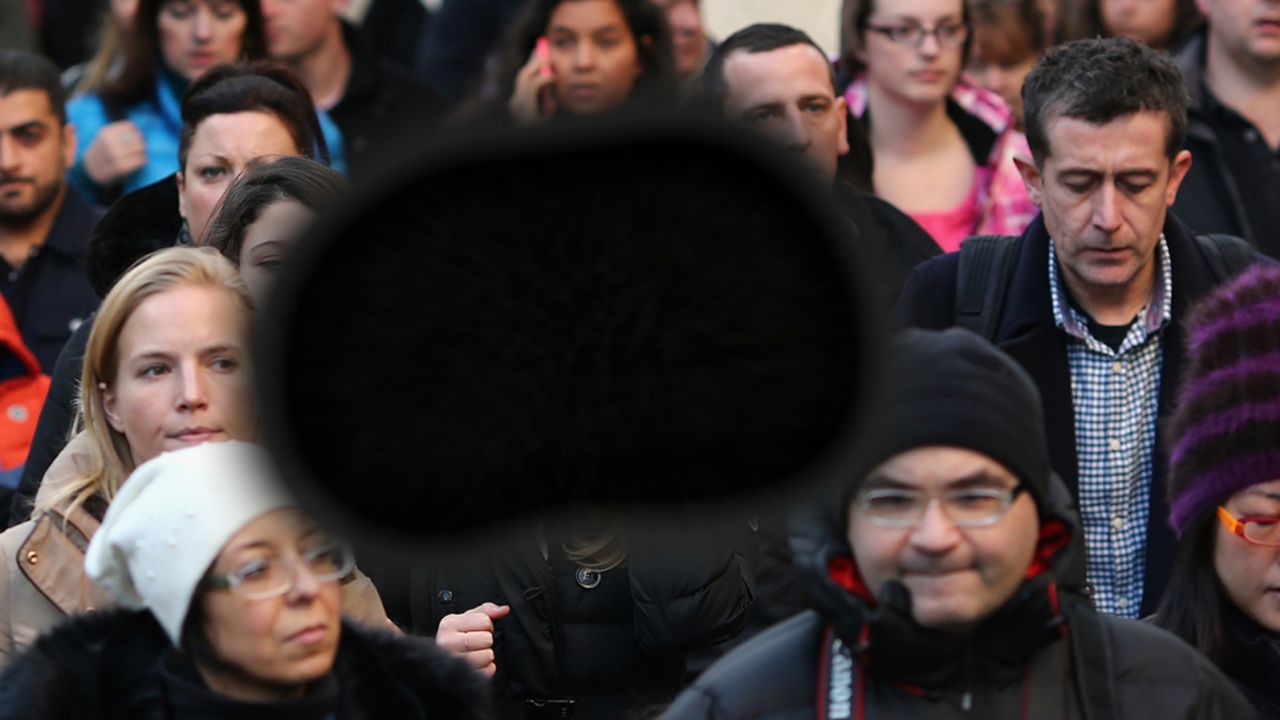It’s the most common cause of blindness in the Western world and there is no cure.
At least not yet.
Age-related Macular Degeneration (AMD) affects around 15 million people in the U.S. alone, and globally up to 30 million. For most victims, vitamins and pain relief are the best treatment available.
But Professor Pete Coffey of University College London is pioneering a new therapy that could stop the disease in its tracks, and restore vision to the blind, through the London Project to Cure Blindness.
AMD kills the eye’s Retinal Pigment Epithelium (RPE), a layer of cells that support and nourish the eye’s vision center, the macula, which then also gradually dies. Victims experience a black spot in their vision that grows outward, while they lose the ability to read and recognize familiar faces.
Coffey has spent the past eight years creating and refining his treatment to restore vision and on August 11, 2015, the first patient received it.
The landmark operation
The patient was a 60-year-old woman suffering with a severe form of AMD. Blood vessels at the back of her eyes had burst, flooding the retina and rapidly destroying her vision.
Surgeons at Moorfields Eye Hospital in London implanted a thin layer of cells behind the retina of each eye on a polyester patch just three millimeters wide. They used stem cells due to their ability to become many other cell types in the body. In this case, they had been cultivated as RPE cells to replace the patient’s diminished stock.
“Recovery is possible … there is a window when you can put the cells in and recover the patient’s vision,” says Coffey. He hopes for patients to get their lives back. “I would hope they can recognize their families again,” he says.
But six months on from the landmark operation, the award-winning ophthalmologist is hesitant to declare victory.
“We are assessing her vision – we need more information to make conclusions,” says Coffey. “I’m pleasantly surprised the cells are surviving to this stage given how nasty (bloody) the environment was.”
Nine more patients will go under the knife during this trial. If it proves successful, Coffey hopes the procedure can become as routine as cataract surgery – ending the suffering of millions.
“My deeply cherished ambition is to make this therapy readily available for anyone suffering with AMD,” he says.
First steps as a student
As a psychology undergraduate in the early 1980s, Coffey was inspired by the work of a research group in Sweden led by Professor Anders Bjorklund, which was exploring cell transplant therapies in the brain to treat Parkinson’s disease.
Coffey followed the group’s work avidly, but wondered why these radical new therapies were being applied to an organ as complex as the brain.
“Why not look at system we know a lot about, and can test easily?” he thought.
The eye was the obvious choice for Coffey, for its accessibility, relative ease of monitoring, and the “immune privilege” that makes it less likely to reject transplant material than other parts of the body.
Within the eye, he targeted RPE cells, as their function appeared less complex than that of other cells involved in the progression of the disease.
From 1998, Coffey began to develop his therapies for the RPE, drawing on a recent advance that was then spreading excitement throughout the field of regenerative medicine: stem cells.
Rollercoaster journey
Coffey enjoyed early success. He was initially able to repair the vision of several patients by transplanting healthy cells from other parts of their eye into diseased areas and his work was praised by peers in the field.
However, a lack of funding threatened to curtail his progress, and by 2006 it had become almost impossible to continue. “That was the most difficult period,” Coffey reflects. “The project could have finished there.”
But it didn’t.
Coffey received a surprise call from an anonymous U.S. philanthropist offering a no-strings donation of $5.6 million.
Coffey seized the opportunity, and made an ambitious commitment – to fast-track a stem cell therapy for AMD in human trials within five years, a process that might otherwise have taken 20.
The London Project to Cure Blindness was born.
The first step was to assemble an inter-disciplinary A-team of scientists, engineers and clinicians, including vitreoretinal surgeon Lyndon De Cruz, who would eventually conduct the landmark procedure.
The team moved swiftly through the phases: They selected human embryo cells as their source, after rejecting those of cadavers’, demonstrated the procedure using animals and manufactured the cells to clinical standards for use in humans.
“That was the most confidence-boosting part of the project,” recalls Coffey. “We had the cells in the dish and they would do whatever we wanted – eat rubbish, produce chemicals, handle stress – whatever we threw at the cells, they passed.”
Wearing many hats
As the Project entered unchartered territory, innovation was a constant requirement. New surgical tools were invented, technology from the Hubble telescope was adapted as an imaging tool, and multiple designs were explored and rejected for the membrane that would carry the stem cells into the eye.
“The membrane was the scariest bit – I’m not a bioengineer,” says Coffey. “I had to get off my specialist area.”
But Coffey had to wear many hats – none more alien than that of political lobbyist. After the 2010 general election it was feared that research funding could be cut, so Coffey invited government officials on a tour of his lab. He was relieved to be spared in their spending review.
Progress continued and Coffey’s therapy finally reached trial in 2015 – three years later than planned.
A thriving landscape
The landscape today for eye-related stem cell therapy is teeming with innovation – and competition. Groups in the United States, Japan, and Israel are testing RPE replacement treatments with a range of cell sources and delivery methods, including a new type of stem cell that had arrived on the scene, known as Induced Pluripotent Stem (iPS) cells.
In 2012, John B. Gurdon and Shinya Yamanaka won the Nobel Prize for Medicine for their discovery and development of iPS cells, which allow almost any cell in the body to be reprogrammed into a stem cell. Using these as a source would lower the risk of immune-system rejection as the patient’s own cells can be used, and this also sidesteps ethical objections to the use of embryos.
The first iPS cell trials with humans were on RPE cells, at the Riken Center in Japan. However, this highlighted a key risk of the practice, as the trial was discontinued after causing abnormal growth in one subject.
Looking out for hurdles
Coffey believes there are two major health concerns with this form of cell therapy. “You don’t want cells to proliferate – this is often defined as a tumor,” he says. “You also don’t want cells wandering off elsewhere in the body (such as) your heart or lungs.”
But he is convinced that the eye should remain the vanguard of stem research, and Deborah Sweet, editor of Cell journal, agrees.
“The eye has advanced more than most areas,” she says, adding that Coffey’s work is “one of the first examples of stem application and I’m excited to see it.”
Dr. Sally Temple, president of the International Society for Stem Cell Research, believes Coffey’s therapy can enable further breakthroughs. “If RPE replacement works, this will help pave the way for replacement of other retinal cells, and other central nervous system cells.”
However, Temple adds a note of caution over the current trial. “A permanent patch such as polyester forms a barrier. If the RPE cells die (this) could cause the overlying retina to die.”
The future will have a cure … and more
Following his recent successes, Coffey is already pursuing new horizons. He is globalizing his AMD therapy through an affiliate in California, and running offshoot project the “Bank of Disease,” targeting new treatments for a range of blindness-causing conditions, such as the inherited conditions Retinitis Pigmentosa and Stargardt’s Disease that also result from damage within the retina.
The scientist is also looking even further ahead, predicting that it will become possible to regenerate cells in the body itself – without need of transplants.
“I always keep sight of the future,” says Coffey.
Thanks to his work, millions of people could keep theirs.







